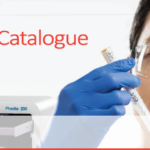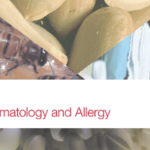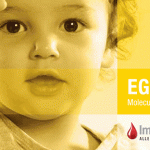New Levels of Allergy Management: What is Molecular Allergology?
Products are for professional/laboratory use only.
An allergy diagnosis is based on the history, clinical symptoms and physical examination of the patient in combination with results of sIgE tests.
ImmunoCAP® Molecular Allergology takes the diagnosis and management of allergy to a whole new level. The technology uses single allergen components to quantitatively detect IgE antibodies. A single blood sample enables measurement to all available ImmunoCAP components, providing precise results for better risk assessment. ImmunoCAP Allergen Components help differentiate “true” allergies from symptoms due to cross-reactivity, evaluate the risk of severe reactions and help in defining the optimal specific immunotherapy treatment. Benefits that ultimately can improve the patient’s quality of life.
In Molecular Allergology, extract based testing is used together with component-specific analyses-the extract gives the overall answer to whether the patient is sensitised to the particular allergen source and the components adds vital information on risk, specificity and cross-reactivity.
Components are proteins (*the exception is CCDs that are not proteins), and there are four important aspects of these allergen molecules that influence the clinical consequences of sensitization to them. Components can be specific, they may be cross-reactive, have different stabilities, and they are present in different amounts in allergen sources. The ingested/inhaled amount of the allergen component is of importance for the clinical consequences of sensitisation.
Based on amino acid sequence and structural homology, proteins are grouped into families. The stability of proteins varies between the different protein families, which forms the basis for making risk assessment of the clinical symptoms elicited by sensitisation to them.
Depending on how unique the components are in distribution and structure, they are classified as Specific markers or Cross-reactive marker components. Specific allergen components are more or less unique for their source, and are found only in a rather limited number of very closely related species. Cross reactive allergens on the other hand, are widely distributed (also in distantly related species) and due to their high degree of structural similarity may cause IgE antibody cross-reactivity.
Sensitization patterns on a component level can help assess the risk of severe allergic reactions, explain symptoms due to cross-reactivity and identify patients that are likely to be helped by Specific Immunotherapy.
Click the links below for more information:
- Peanut components
- Milk components
- Egg components
- Furry Animals components
- Soy components
- Venom components
- Olive pollen components







